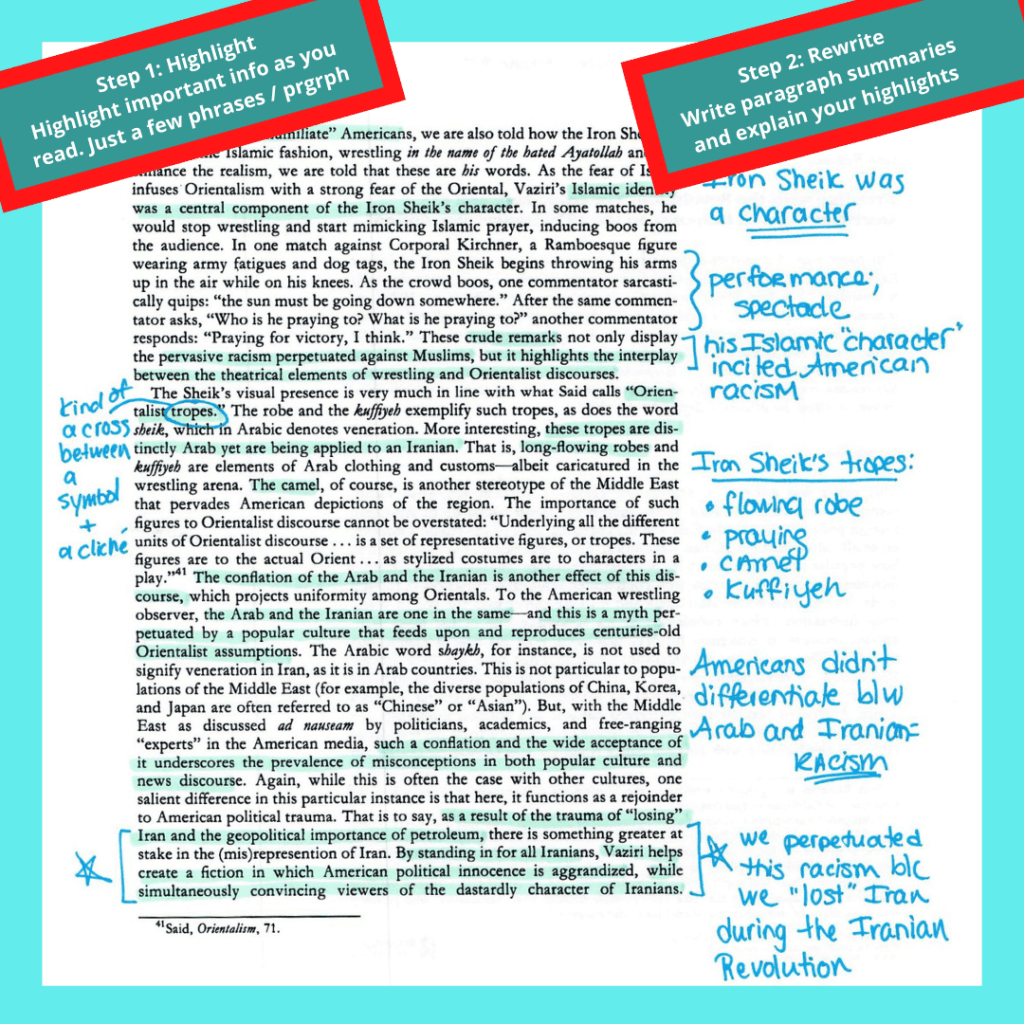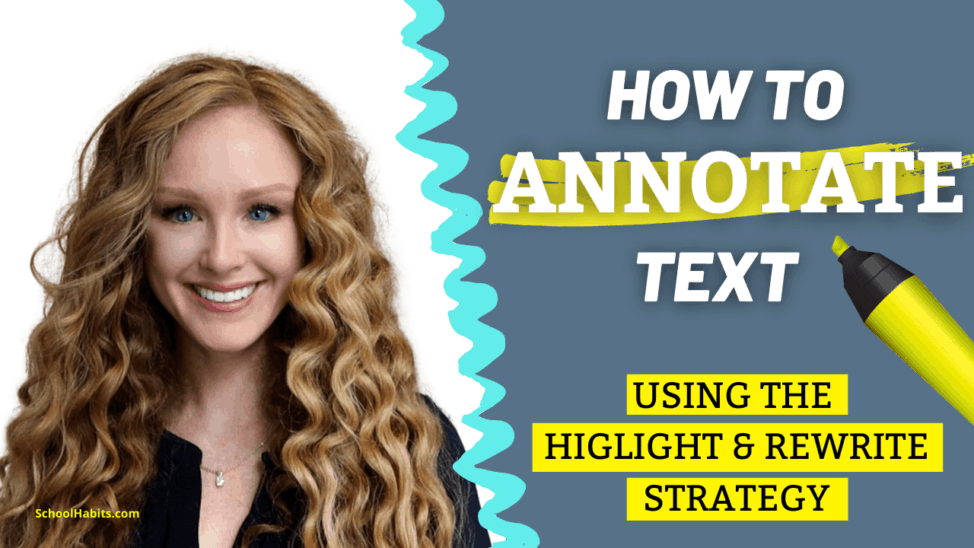By Katie Azevedo, M.Ed.
Knowing how to annotate text is basically a super power. It’s a skill you’ll need for your entire academic experience, no matter what class you’re in or what your major is. For this annotation strategy, you’ll just need the basics: a highlighter and a writing utensil.
If you’re absolutely new to annotating text, then you want to start with these 11 annotation strategies.
If you have experience annotating text and you just want to get better or quicker, you’re in the right spot.
In this tutorial, I share a simple annotation strategy, using just a highlighter and a pen, that will help you better understand and remember difficult material. Because as you know, the entire purpose of annotating in the first place is to have a closer understanding of the text.
This annotation strategy is meant for complicated texts, not light readings. No need to annotate the easy stuff. So we’re talking about textbooks, literature, academic articles, rich short stories, and things like that.
A few annotation basics before we start:
- To annotate means to take notes. Hopefully you know that.
- You can annotate using tech or paper. One method might be better for certain people, so you’ll have to see what works for you. In the video that goes along with this post, I walk through a detailed demonstration of both strategies.
- Annotating works because when we write things down, we engage more neural networks in our brain that help us process what we are reading. It’s simple cognitive science.
- Annotations look different based on the purpose of the reading and what you want to get out of it. If you’re annotating just for symbols or themes, your notes will look different than if someone were annotating just for better comprehension.
Alright: the strategy …
How to annotate text: The highlight and rewrite strategy
I call this strategy HIGHLIGHT and REWRITE. Yes, I made it rhyme, because come on. So as the name implies, there are two steps to this strategy:
- Highlight
- Rewrite
1. Highlight
For most dense texts, you should read just one or two paragraphs at a time, highlighting as you read. At this point, you’re not writing anything – just highlighting.
If you highlight too much, nothing stands out. If you highlight too little, it’s pointless. So the first part of this strategy is all about knowing what to highlight. Depending on the purpose of your reading and the type of text, you could highlight any of the following:
What to highlight for novels:
- Main ideas
- References to themes
- Characterization
- Plot development
- Conflicts – internal and external
- Foreshadowing and symbols
- Turning points / main events
- Interesting parts
- Parts you have questions about
- Words you want to look up
What to highlight for non-fiction or academic articles:
- Main ideas
- Important event or dates
- Contrasting views
- Important people
- Characterization
- Interesting parts
- Parts you have questions about
- Words you want to look up
Depending on the length of the reading, you shouldn’t have more than a few sentences or phrases highlighted in each paragraph. This is a quick process. Read, think, swipe.

2. Rewrite
After you’ve read and highlighted one or two paragraphs – no more than that – you are going to write stuff in the margins. If your text is full of highlighter but no words, you’re doing it wrong.
After highlighting, there are basically two things you want to write in the margins.
1. A very simple summary of what you just read. Think re-write = summarize. Use bullet points or phrases – no need for complete sentences. Use your OWN words. Do not use the language from the original text. Copying the text directly into the margins literally does nothing. Taking time to write a brief summary ensures that you really understand what you just read, because if you can’t summarize it, you don’t understand it.
2. Note the reason why you highlighted certain parts. So if you were reading Catcher in the Rye and you highlighted a reference to Holden’s red hunting hat, which is a symbol, you would write “symbol” or “he’s thinking of Allie” which is what the hat symbolizes if you’ve read the book.
If you highlighted something you thought was foreshadowing, then write “foreshadowing” next to that part. If you highlighted a new word, write the definition. If you highlighted something interesting, write down why it’s interesting (your genuine reaction).
If you don’t take the time to write a note about what your highlights mean, then when you go back to the text later on, you’re not going to remember why you highlighted anything.
Analog vs. digital notes
Consider taking digital annotations if the majority of your reading is online – like if you have an online pdf or online textbook. Also, if you have messy handwriting or something like dysgraphia, digital notes are for you. If you’re reading a paper novel, find a pdf version to annotate. If you’re reading a paper-based article, scan it into your computer so you can annotate it with an app.
If you’re a kinesthetic learner or simply prefer analog learning, then consider doing your annotations on paper. If the text you need to annotate is online, print it out.
Final notes about how to annotate text using the highlight and rewrite strategy
This is worth repeating: the entire purpose of annotating is to get a better understanding of the text. While you might get annoyed that annotations slow down the reading process (which they do; you’re right), this is actually a good thing. When we slow down and think about what we read, and then write about what we think, we can fully understand the text in front of us.

